Pathways to Prevent Dumping of Climate Harming Room Air Conditioners in Southeast Asia

In the midst of a global climate emergency where high temperature records are broken annually, it is disappointing that the production and sale of affordable efficient ACs does not extend across all markets in Southeast Asia. This research shows the added financial savings and emission reductions that can come from stopping the influx of obsolete, energy-guzzling appliances that provide life-saving cooling to millions of people.Christine Egan
CEO, CLASP
The inefficient ACs flooding the region are manufactured by multinational companies, which produce high-efficiency models for their domestic markets. This practice of ‘appliance dumping’ takes advantage of loopholes in national regulations, posing a severe threat to the planet, exacerbating climate change, straining energy grids, and increasing energy costs for consumers.
This report by CLASP, with support from the Institute for Governance & Sustainable Development (IGSD), documents that five of the six Southeast Asian markets studied – Indonesia, Malaysia, the Philippines, Thailand, and Vietnam – are saturated with low-efficiency room air conditioners (ACs), while only Singapore has efficient ACs with less-damaging refrigerants.
The soaring temperatures and record heatwaves that plague Southeast Asia have led to a surge in demand for residential air conditioning. However, the report reveals that if all six countries put an end to the dumping of inefficient ACs, it could result in a reduction of over 1 billion metric tons of carbon dioxide emissions over 25 years. Additionally, the region would save a cumulative USD 148 billion, exceeding the combined energy investment of the six analyzed countries over the last quarter century (USD 134 billion).
Key findings of the report include:
- The dominant multinational brands responsible for this dumping are headquartered in China, Japan, South Korea, and the United States. Since the majority of electricity in Southeast Asia is generated by fossil fuels, energy-intensive RACs contribute towards substantial indirect carbon emissions.
- In 2021, a notable 74% of total sales (6.2 million units) in the six markets were classified as low efficiency. However, sales of low-efficiency RACs vary by country. Indonesia and the Philippines are the most exposed to dated technology, with 97% and 78% of RACs, respectively, falling into this category, while in Vietnam, Malaysia, and Thailand the number is around 60%. Singapore had the most efficient RAC market, with just 21% of total sales being low-efficiency models.
- Most RACs imported to Southeast Asia do not meet the applicable minimum energy performance standards (MEPS) of the export countries. This means these inefficient units are banned from being sold in the brands’ domestic markets. Approximately 93% of RACs imported into Southeast Asia from China do not meet the efficiency requirements of China MEPS. 59% of RAC exports from South Korea to Southeast Asia and 21% of RAC exports from Japan to Southeast Asia are below the brands’ home-country requirements.
- The six Southeast Asian RAC markets use HFC refrigerants that have high GWPs. R-410A, an obsolete refrigerant scheduled for phasedown under the Montreal Protocol, has a GWP of 2,088, meaning it is over 2,000 times the potency of carbon dioxide. RACs containing R-410A accounted for 35% of Southeast Asia sales in 2021, measuring highest in Singapore (90%) and Thailand (66%).
Translations
Let’s Cook Clean: Navigating E-Waste Management in Kenya and Rwanda
Increasing access to electricity, levels of disposable income, and growing urbanization are key contributors to the burgeoning number of appliances across most modern societies. For instance, the Kenya home appliances market attained a value of USD 184.48 million in 2018 and is projected to reach USD 363.92 million by 2027, growing at a compounding annual growth rate (CAGR) of 7.8%.1
This significant growth speaks to the urgent need to plan for proper management of potential e-waste resulting from the scale up of the appliance market. Proper management is crucial to avoiding any health or environmental consequences of e-waste and to taking proactive steps towards protecting individuals and their communities.
In Africa, less than 1%2 of e-waste is documented as collected and recycled properly. Even though many studies have been conducted on e-waste management, very few are in sub–Saharan Africa where most countries face significant e-waste management issues.
Loughborough University, through the Modern Energy Cooking Services (MECS) Programme worked with CLASP to conduct a research study on repair and end-of-life practices related to electric cooking appliances in Kenya and Rwanda. As the market for electrical cooking (e-cooking) products is only just taking off in many African countries, the study used televisions as a proxy for e-cooking, given their relatively mature market. The study provides insights into the ecosystem of the appliance market in both countries, how it operates, what happens to products at each stage of their end-of-life pathway, and the associated impacts.
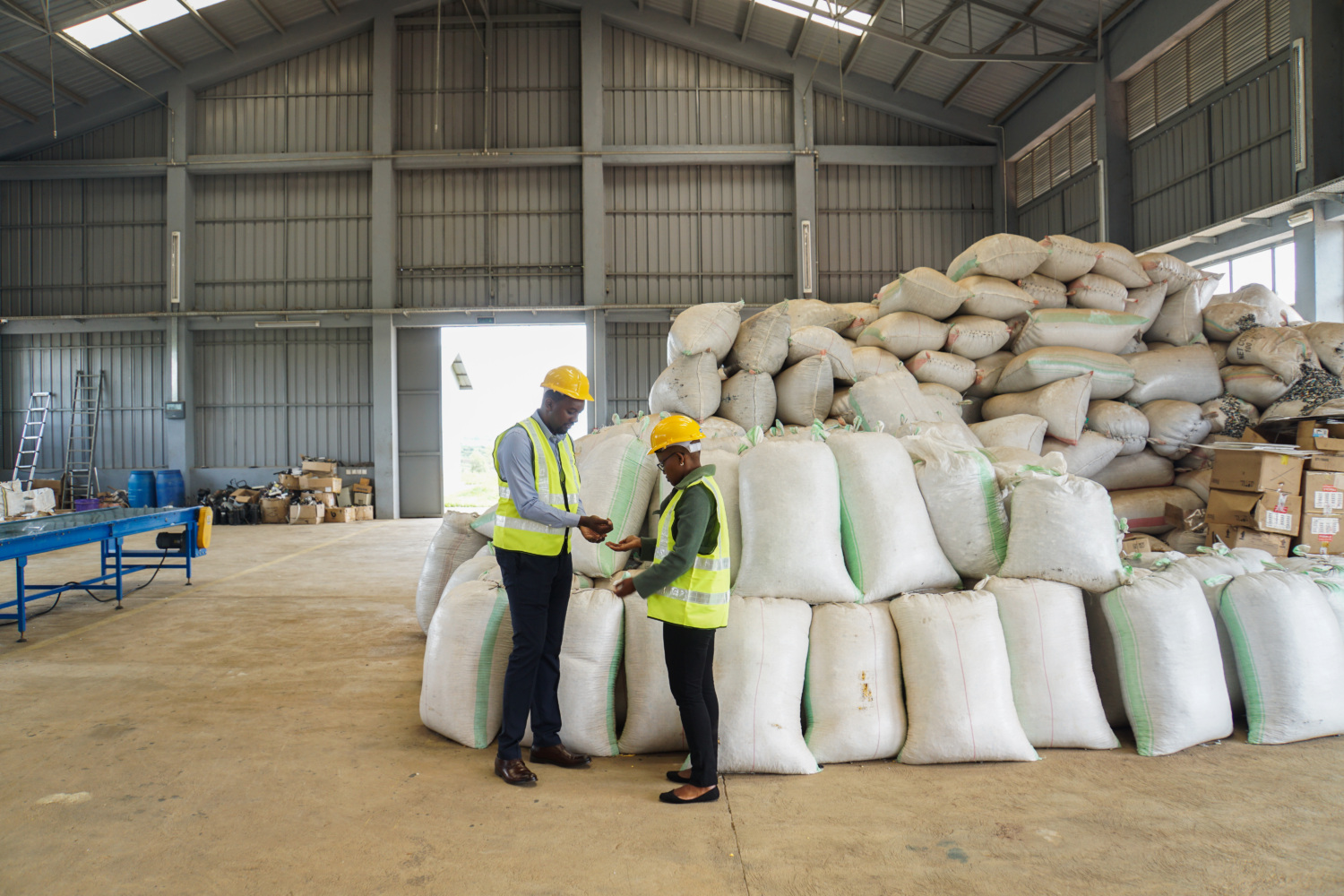
In Africa, less than 1% of e-waste is documented as collected and recycled properly.
Taking Action: Consumer Behavior and Awareness on End-of-Life Appliance Management
Unless externally incentivized, Consumers control the end-of-life pathway for their used electronics. This could be a formal drop-off point, informal waste collection, or storage within the home. Upon appliance failure, many consumers in both countries opt to take the appliance for repair, and this is predominantly conducted by informal local repair shops.
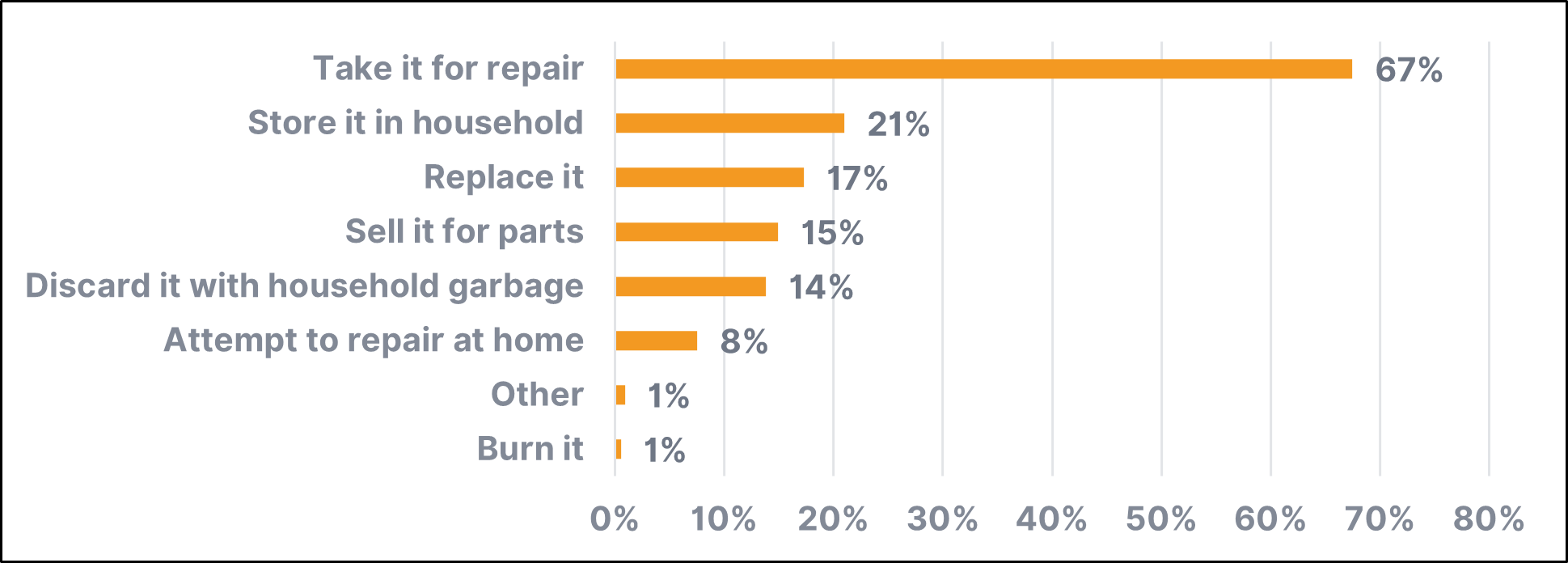
Overall, repair choices are most influenced by cost effectiveness. Consumers in Kenya who repair their appliances are willing to pay a service/repair fee of up to only 20% of the original appliance cost.
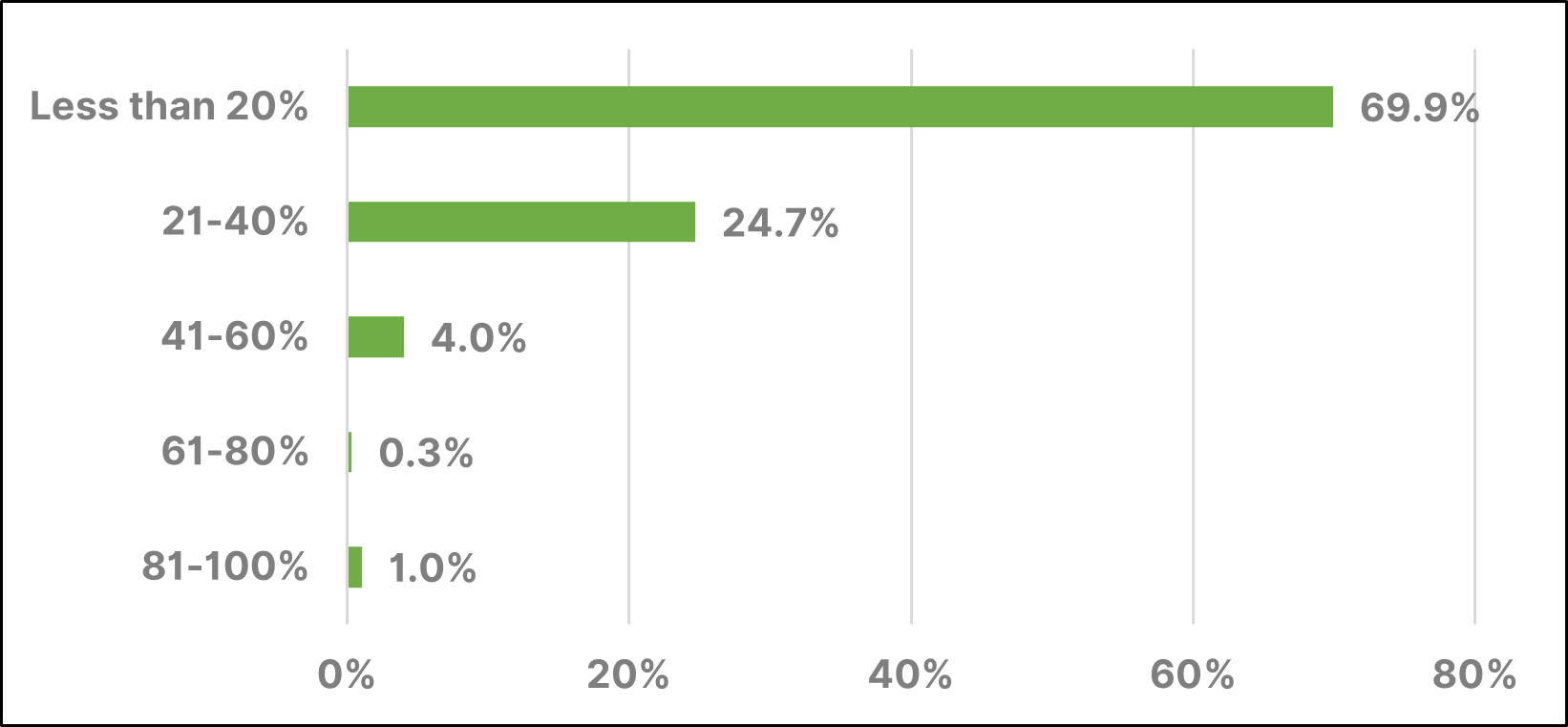
CLASP’s survey revealed that residents are generally more likely to store their non-functioning appliances in their households rather than to dispose or recycle properly, with 84% of respondents in Rwanda and 95% in Kenya reporting a lack of awareness on any designated e-waste disposal options in their communities. However, some consumers could better cite the dangers of improper e-waste disposal, indicating the benefits of awareness raising. Lilian Muthoni of the Usweni region in Kitui county in Kenya noted, “Kuna vitu hufai kuweka kwa nyumba, kama battery italipuka.” (There are things you should not store in your house, something like a battery can explode.)
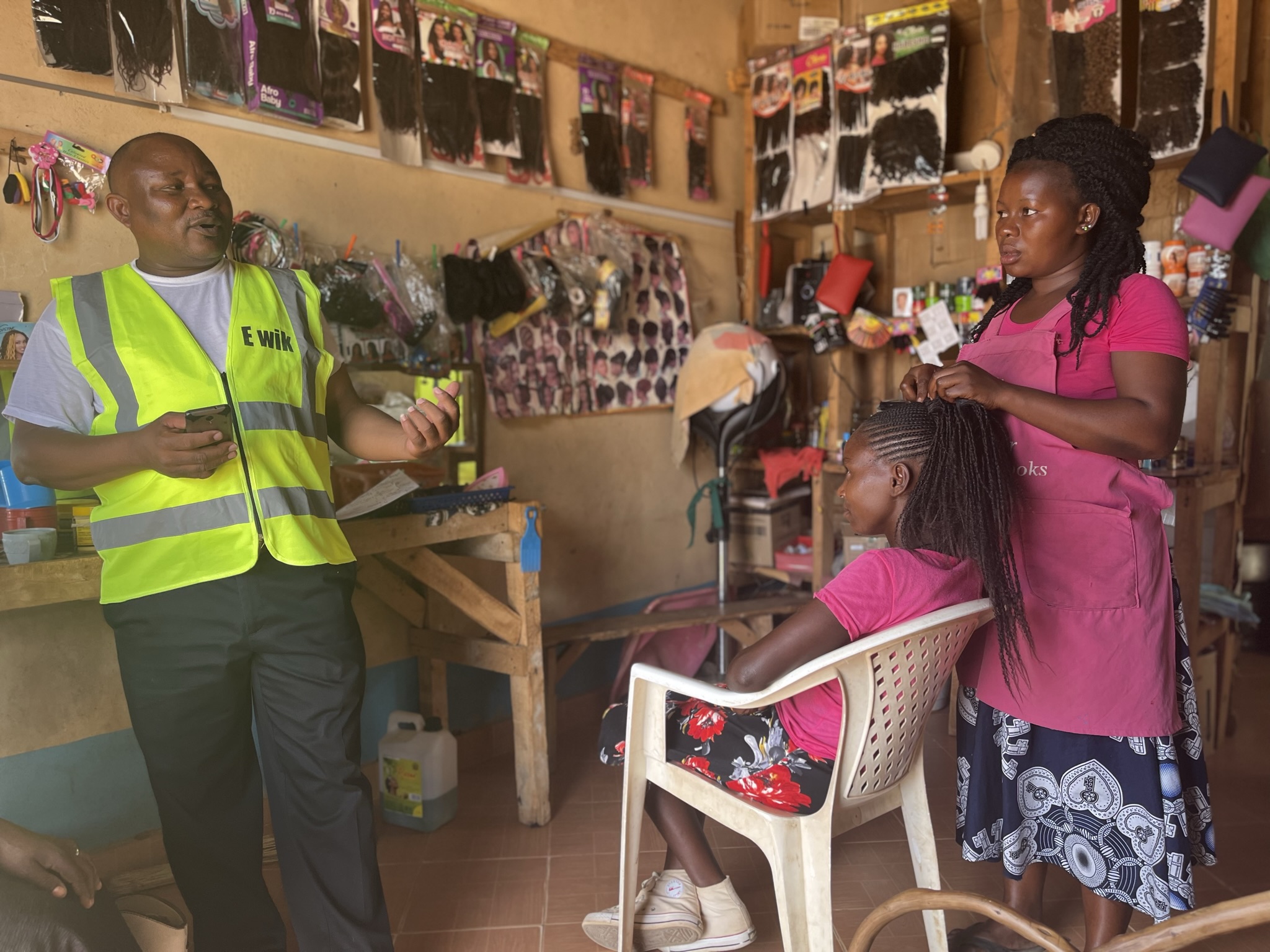
A strong majority of the survey respondents that are using unsustainable practices expressed a willingness to switch to more sustainable behavior. In summary, awareness of environmental impact of poor e-waste disposal, financial incentives, and ease of disposal are the key factors that would promote more sustainable household behavior.
From Policy to Practice: Implementing E-Waste Regulations
Kenya has adopted several regulations that govern the quality and energy efficiency of appliances such as TVs, refrigerators, and off-grid solar (OGS) products. The Energy and Petroleum Regulatory Authority (EPRA) in 2013 initiated a mandatory standards and labelling (S&L) scheme covering lighting products, refrigerators, air-conditioners and motors, and the IEC quality standards for solar products. Similarly, the Rwanda Standards Bureau (RSB) has developed and published several standards for various electrical and electronic products, as well as a dedicated standard on e-waste management. These standards prescribe handling, collection, transportation, and storage of various categories of e-waste. Both countries are party to several regional and multilateral environmental agreements, including the Basel and Bamako Conventions.
Unfortunately, there is currently no information available quantifying the effectiveness of these schemes in keeping low quality appliances off the market. This gap in information may be due to the lack of clear practical guidance on how roles and responsibilities are distributed throughout the e-waste management ecosystem.3 This was evident in the feedback among surveyed e-waste stakeholders, where many had no awareness of the regulations that impacted them; those that did could not describe their effects.
Governments in sub-Saharan African countries are working to develop policies to mitigate further environmental harm, but often lack funding, expertise, and personnel to implement regulations. To achieve a green economy, both Kenya and Rwanda will need to bring together diverse stakeholders, allocate sufficient resources, and invest in awareness raising on proper e-waste management practices and infrastructure.
Keeping Stakeholders in Sync
The e-waste landscape in both Rwanda and Kenya reveals a complex ecosystem with an array of stakeholders, each with varying levels of influence and interests. Collaborative efforts are therefore pivotal in harnessing the potential of these stakeholders to drive sustainable e-waste management and foster a circular economy.
A significant proportion of these stakeholders operate within the informal sector, highlighting the importance of their involvement in decision-making processes and the development of initiatives. For instance, households commonly opt to take their malfunctioning appliances to informal repair shops. However, most times, these repair shops often face challenges related to limited technical expertise for advanced fault resolution and unavailability of spare parts, as Claude, an appliance repairer in Muhanga District in Rwanda said. Claude points out, “Sometimes, when a customer brings a phone, radio, or television to be repaired, we cannot help them because the spare parts are not available here. It would be better if spare parts could be made available in Muhanga or even Kigali.” This sentiment is not unique to Claude.
To support the e-waste landscape, for both formal and informal players, it will be useful to incorporate their perspectives in decision-making around key initiatives designed to develop the market (e.g., capacity-building programs, establishing accessible spare part markets etc.). Moreover, the research findings underline the potential for mutually beneficial relationships to flourish, particularly between formal and informal actors. There is great opportunity for governments to play a vital role in facilitating this collaborative relationship, such as exploring innovative measures and instruments to make the formal sector more accessible to informal stakeholders.
Grounding in Numbers: The Urgent Need for Data
The need for effective e-waste management policies and regulations is apparent, yet it hinges on a fundamental understanding of materials entering and leaving the ecosystem; this is grounded in data. Unfortunately, there is a lack of data on material flows in both Kenya and Rwanda, and the relatively small stakeholder sample used in the study did not offer precise estimates of quantities handled.
Furthermore, the majority of stakeholders, especially those in the informal sector, do not keep track of the amount of materials they handle. A notable example comes from Maina Gitau, a small-scale refurbisher in Nairobi, who found it difficult to pinpoint the number of appliances and materials he sells due to the constant turnover of his inventory. While he likely keeps records of revenue, tracking the precise quantity of materials passing through his shop daily remains a challenge.
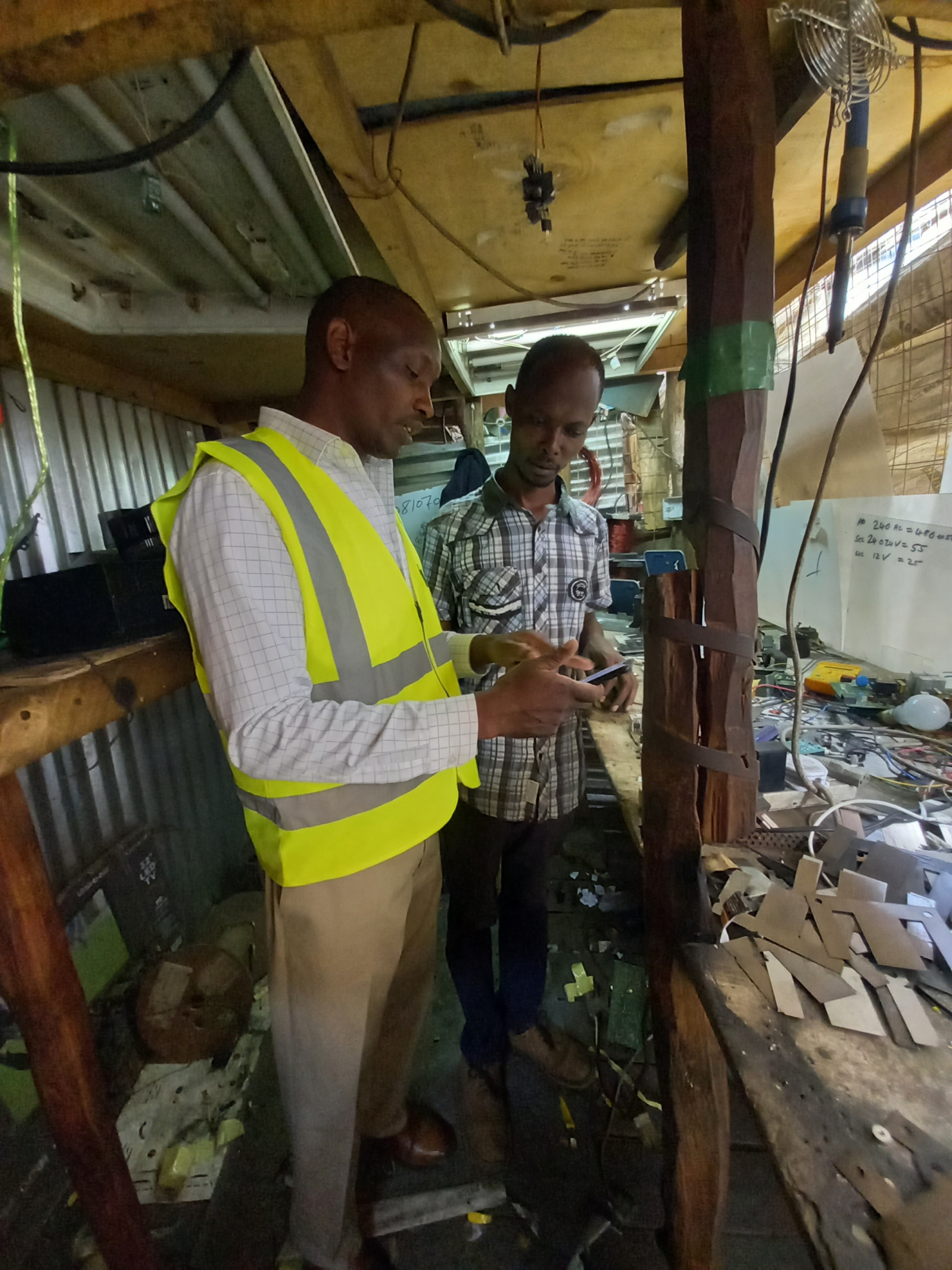
To address these data gaps and ensure an accurate assessment of e-waste flows, both countries must establish systemic data collection frameworks. These frameworks should involve relevant government agencies, including those responsible for trade and industry, to track not only material flows, but also all stakeholders within the appliance value chains.
Crucially, such data collection initiatives will help monitor the impacts of transitioning to a circular economy, which, according to the International Labor Organization, could generate over six million jobs. Furthermore, these frameworks will simplify access to information on e-waste collection and processing facilities for the public, enabling a more informed and responsible action for proper e-waste management. Lastly, government agencies can leverage this data to support collaborations, funding efforts, and infrastructure development aimed at sustainable e-waste management.
Summing it Up
Understanding end-of-life practices for appliances is pivotal in establishing sustainable frameworks for responsible disposal and for promoting the broader mission of circularity. The recommendations derived from our studies in Rwanda and Kenya hold promise far beyond these borders. By implementing robust awareness campaigns, enforcing e-waste regulations, and establishing systemic data collection systems, countries in sub-Saharan Africa can take substantial steps toward responsible e-waste management. May this study serve as a catalyst for others to continue conducting research on e-waste landscapes across sub-Saharan Africa and beyond.
The full publications for this study on Rwanda and Kenya can be accessed on the MECS website.
Explore related work and initiatives in circular economy and clean cooking that CLASP has completed, such as the Bending Toward Circular report and Use and Impacts of Electric Pressure Cookers report. Additionally, be on the lookout for our forthcoming projects, including a reparability index study for solar appliances, which will provide valuable insights into the evolving landscape of sustainable practices and offer opportunities for collaboration in our shared mission towards a more sustainable future.
The EU Paves the Way for Greener Mobile Devices
Brussels, 4 September 2023 – The European Commission takes a major step to lower the environmental impact of smartphones and tablets. The new rules will decrease costs for consumers, mitigate carbon emissions and reduce the use of critical raw materials used in these devices.
Resource and Energy Efficiency Unite
From June 2025, in line with the new Ecodesign and Energy Labelling regulations, smartphones and tablets entering the EU market will be required to meet minimum requirements and provide information on product energy efficiency, ease of repair, battery lifespan, resilience against dust and water, as well as resistance to accidental drops. The Energy Labelling Regulation introduces a requirement for mobile devices to display the A-G energy class rating, as well as a score for each aforementioned aspect. Further product information will be accessible through the European Product Registry for Energy Labelling (EPREL).
The European Commission said, “These measures help to make the EU’s economy more circular, save energy, cut our carbon footprint, support circular business models and deliver the benefits of the European Green Deal for consumers… Mobile phones and tablets produced according to these rules will save almost 14 terawatt hours in primary energy each year by 2030. This is one third of the primary energy consumption of these products today.”
The combined impact of the Ecodesign and Energy Labelling regulations is estimated to reduce purchase, repair, maintenance and energy-related costs for consumers by 25%, while mitigating 53 Mt of CO2 by 2040. They also aim to decrease the use of new materials for production by 35%, along with a 22% reduction in the use of critical raw materials.
CLASP Research Empowers Repair and Sustainability
CLASP, along with Right to Repair Europe, played an instrumental role in shaping the Ecodesign Regulation. Their research highlighted the challenges EU citizens face in repairing their devices, due to limited options imposed by Original Equipment Manufacturers (OEMs) that only offer repairs for specific key parts.
CLASP found that limited repair options drive consumers to purchase new smartphones and tablets. This ultimately shortens the lifespan of devices and contributes to increased electronic waste, which threatens the repair ecosystem and undermines resource efficiency goals. Following our recommendations, the Ecodesign Regulation comprehensively addresses factors that limit product lifespans and hinder recycling. It ensures the accessibility of spare parts, encourages ease of repair, enhances reliability and promotes second-hand markets.
Nicole Kearney, CLASP Europe Director, states “The European Commission has demonstrated an exemplary focus on prioritizing circularity and the consumer’s right to repair. Ensuring Europeans can more easily repair, rather than replace, their smartphones and tablets, will help reduce e-waste, carbon emissions, as well as costs for consumers.”
Towards a circular electronics revolution
The EU’s leadership on resource and energy efficiency for smartphones sets the precedent for other regions and countries to adopt similar regulations and has the potential to create a ripple effect of positive change. The Ecodesign and Energy Labelling regulations enable a repair over a replace economy, requiring the electronic appliance industry to prioritize product durability and circular economy principles. This framework demonstrates the regulatory capacity to revolutionize the industry, fostering innovation, efficient resource utilization and environmental awareness.
Next steps
The new Ecodesign and Energy Labelling rules were published in the EU Official Journal on 31 August 2023 and will become fully applicable on 20 June 2025. This period offers stakeholders the opportunity to adjust and comply with the new regulations.
For media inquiries and more information, please contact
Païline Caroni
Communications – CLASP Europe
About CLASP:
CLASP is an international nonprofit leading the research and promotion of appliance efficiency and energy access to improve the lives of people and the planet. CLASP works to combat climate change and drive the transition to a more energy-efficient and just future where no one is left behind. Headquartered in Washington DC, and based in Beijing, Brussels, Dehli, Jakarta and Nairobi, CLASP works with governments, appliance manufacturers and partners to advance positive change on a global scale.
CLASP Embraces China’s Newest Push Toward Circular Economy
Following China’s policy efforts to increase circular economy (CE) principles domestically, CLASP’s China program will integrate CE into project plans for 2023-2024. Initially, CLASP may support the phase out mercury-containing fluorescent lamps and promote environmentally-friendly refrigerants. This move will strengthen CE policy both in the country and surrounding region, as China is a key manufacturer and exporter for a plethora of appliances.
“This is a practical guidance for all industry stakeholders. It helps manufacturers to enhance manufacturing capacity for energy-efficient products and collaborate with waste management facilities to grow demand in the waste appliance recycling market. Consumers will also be supported to exchange their appliances for more efficient models.”
– Mr. Pengcheng Li, CNIS Chief Analyst
Chinese policymaker interest in circular economy has grown steadily since the 2009 passage of the Circular Economy Promotion Law of People’s Republic of China. This new policy, titled Guiding Opinions on Coordinating Energy Conservation, Acceleration and the Renovation and Upgrade of Products and Equipment in Key Areas, integrates CE strategies with existing work to promote energy-efficient appliances. The overarching goal is to further the market share of high-efficiency, energy-saving appliances and equipment.
To manage the influx of older and less-efficient models that will be swapped for more efficient alternatives, the Government is creating mandated recycling streams and requiring safe and environmentally sound disposal of associated HCFCs and HFCs (ozone-depleting refrigerants used in many appliances). Researchers and industries see this policy as a stimulus for an improved economic system of recycling, resource utilization, clean and low carbon production to help establish circular economy in the appliance sector by 2025.
“We are confident that this policy will help China to cut energy consumption intensity by 13.5% per GDP and to honor international agreement such as Kigali Amendment and the Minamata Convention on Mercury”.
– Steven Zeng, CLASP China Program Lead
CLASP is eager to be involved in this complementary role to energy efficiency policy and expanding our role in shaping circular economy progress. Learn more about our circular economy work and efficiency work in China.
Press Release: Productive Use Financing Facility Opens First Public Auction Window
Nairobi, Kenya, 12 April 2023 – Access to productive use appliances can deliver significant economic, health, education, and quality of life benefits for the approximately 600 million people across the African continent who lack access to electricity. This can also put under-electrified parts of the world on a low-carbon pathway to electrification. However, affordability remains a major barrier to access and scale. The Productive Use Financing Facility aims to help address the affordability barrier, and the current auction window will make procurement subsidies available for companies in six African countries.
Makena Ireri, Director at the Global Energy Alliance for People and Planet, said, “The Facility will help make high-quality, productive use appliances more affordable and accessible. These technologies can transform lives and livelihoods by helping to create new green energy-enabled jobs, enhance income generation for micro-enterprises and smallholder farmers, and improve the sustainability of renewable energy infrastructure projects through increased demand for electricity.”
The Facility’s initial scope includes the Democratic Republic of Congo, Ethiopia, Kenya, Nigeria, Sierra Leone, and Uganda based on growth potential and market maturity. Eligible technologies include electric pressure cookers, fans, milling, solar water pumps, refrigerators/freezers, and walk-in cold storage. All technologies must complete quality assurance testing, helping to ensure that users receive high-quality products.
Eligible distributors can also apply for capacity-building small grants to offset one-off costs associated with nascent PUA business lines, such as warehouse space, staffing, or training. The procurement subsidies and capacity-building grants will allow eligible companies to lower costs for customers while investing in long-term growth. Participating companies may also agree for the Facility to share their information with Nithio, should they wish to be considered for debt investment to help them further scale their business and reach more consumers.
Interested companies should send in their applications by the end of day on April 21, 2023. Please check out these resources to learn more about the program, including eligibility requirements of the procurement subsidy auction window and how to submit a subsidy request. For any other questions, please get in touch with financing@clasp.ngo.
About the Facility
Launched in October 2022 by CLASP and Nithio, with support from the Global Energy Alliance for People and Planet (GEAPP), the Facility supports companies in catalyzing the growth of productive use appliance markets. Facility operations will also generate a foundational data set on appliance market activity and the developmental impacts of appliances, improving our collective knowledge base on appliance performance, national markets, and consumer experience and satisfaction.
Companies can leverage the Facility to access bulk discounts on solar appliance procurement and offer products on credit to lower the cost of appliances for end-user. The Facility also provides smaller capacity-building grants and advisory support for PUA distributors to help establish credit systems and increase their investment readiness.
Facility support is intended to help companies expand their reach and cater to a broader market, helping to deliver essential technologies to more consumers in East and West Africa.
About CLASP
CLASP focuses on appliance & equipment energy performance and quality, to mitigate and adapt to climate change and expand access to clean energy. Super-efficient and high-quality appliances accelerate access to and use of renewable energy for the world’s poorest people. CLASP supports progress on the United Nations’ Sustainable Development Goal 7, affordable and sustainable energy for all. Renewable energy services like cooling, communications, and mechanization empower low-income communities and improve lives in a climate-friendly way. CLASP works globally and has teams in Washington, DC; Nairobi, Kenya; New Delhi, India; Brussels, Belgium; and Jakarta, Indonesia.
About Nithio
Nithio is an energy financing platform powered by its innovative credit risk analytics engine. Nithio leverages its deep sector expertise, geospatial data, and artificial intelligence (AI) to forecast repayment patterns by consumer segment, provide detailed insight on projected cash flows, and finance energy access technologies.
About the Global Energy Alliance for People and Planet (GEAPP)
The Global Energy Alliance for People and Planet (GEAPP) is an alliance of local entrepreneurs, governments in emerging and developed economies, and technology, policy, and financing partners. Our common mission is to support developing countries’ shift to a clean energy, pro-growth model that ensures universal energy access and unlocks a new era of inclusive economic growth, while enabling the global community to meet critical climate goals during the next decade. In doing so, as an Alliance we aim to enable 150 million new jobs, reduce 4 gigatons of future carbon emissions, and expand clean energy access to one billion people. With philanthropic partners, Bezos Earth Fund, IKEA Foundation, and The Rockefeller Foundation, GEAPP works to build the enabling environment, capacity, and market conditions for private sector solutions, catalyze new business models through innovation and entrepreneurship, and deploy high-risk capital to encourage private sector solutions, and assist just transition solutions. For more information, please visit www.energyalliance.org and follow us on Twitter at @EnergyAlliance.
Media Contact
Lisa Kahuthu, CLASP: lkahuthu@clasp.ngo
Press Release: CLASP & Nithio Launch Financing Facility for Productive Use Appliances
Kigali, Rwanda, 19 October 2022 – Today at the Global Off-Grid Solar Forum and Expo, CLASP and Nithio launched a USD $6.5 million financing facility to catalyze uptake of productive use appliances across Africa. The facility will improve appliance affordability for consumers and companies and is supported by the Global Energy Alliance for People and Planet (GEAPP).
Access to productive use appliances can deliver significant economic, health, education, and quality of life benefits for an estimated 60 million households worldwide and put under-electrified parts of the world on a low carbon pathway to electrification. Yet, affordability remains a major barrier to access and scale.
Speaking during the facility’s launch in Kigali, Rwanda, Jeff Stottlemyer, Director at CLASP said, “This facility is designed to catalyze private investment in productive use appliance markets at scale, making those appliances more affordable and accessible.” CLASP and Nithio identified six appliance technologies based on their relative maturity and potential to drive development impact – walk-in cold rooms, refrigerators, electric cookers, fans, mills, and solar water pumps.
Chianda Njogu, Senior Associate at the Global Energy Alliance for People and Planet (GEAPP) said, “By making productive use appliances affordable and accessible, the facility can transform lives by enhancing income generated by smallholder farmers and micro-enterprises, creating new green energy enabled jobs, and improving the sustainability of renewable energy infrastructure projects through increased demand for electricity.”
The facility will initially operate in Democratic Republic of Congo, Ethiopia, Kenya, Nigeria, Sierra Leone, and Uganda based on growth potential and market maturity.
Kate Steel, Chief Executive Officer at Nithio said, “Consumer financing is crucial to long-term, sustainable growth in the productive use market. GEAPP’s support will enable Nithio to leverage our unique, data-drive approach to make consumer financing accessible for more companies and, ultimately, make it easier for their customers to afford these life-changing technologies.”
How it Works
The facility will offer procurement subsidies, capacity building grants, consumer financing, and advisory support focused on credit systems development for productive use appliance distributors. It will lower appliance costs for end-users by discounting the price of bulk solar appliance procurements and providing financing for distributors to enable them to sell their products on credit.
For more information, please visit our website. Grant requests and general enquiries should be sent to Financing@clasp.ngo. For media enquiries, please contact Lisa Kahuthu (lkahuthu@clasp.ngo)
About CLASP
CLASP focuses on appliance & equipment energy performance and quality, to mitigate and adapt to climate change and expand access to clean energy. Super-efficient and high quality appliances accelerate access to and use of renewable energy for the world’s poorest people. CLASP supports progress on the United Nations’ Sustainable Development Goal 7, affordable and sustainable energy for all. Renewable energy services like cooling, communications, and mechanization empower low-income communities and improve lives in a climate friendly way. CLASP works globally and has teams in Washington, DC; Nairobi, Kenya; New Delhi, India; Brussels, Belgium; and Jakarta, Indonesia.
About NITHIO
Nithio is an energy financing platform powered by its innovative credit risk analytics engine. Nithio leverages its deep sector expertise, geospatial data, and artificial intelligence (AI) to forecast repayment patterns by consumer segment, provide detailed insight on projected cash flows, and finance energy access technologies.
About the Global Energy Alliance for People and Planet (GEAPP)
The Global Energy Alliance for People and Planet (GEAPP) is an alliance of local entrepreneurs, governments in emerging and developed economies, and technology, policy, and financing partners. Our common mission is to support developing countries’ shift to a clean energy, pro-growth model that ensures universal energy access and unlocks a new era of inclusive economic growth, while enabling the global community to meet critical climate goals during the next decade. In doing so, as an Alliance we aim to enable 150 million new jobs, reduce 4 gigatons of future carbon emissions, and expand clean energy access to one billion people. With philanthropic partners, Bezos Earth Fund, IKEA Foundation, and The Rockefeller Foundation, GEAPP works to build the enabling environment, capacity, and market conditions for private sector solutions, catalyze new business models through innovation and entrepreneurship, and deploy high-risk capital to encourage private sector solutions, and assist just transition solutions. For more information, please visit www.energyalliance.org and follow us on Twitter at @EnergyAlliance.
Media Contact:
Eric Gay
Global Energy Alliance for People and Planet
+1 917 912 6190,
Communicating Circular Economy Through Labeling
The concept of circular economy (CE) and its inclusion on appliance energy efficiency labeling is still relatively new but is needed to increase awareness of CE principles across in all stakeholders. Because of its recency, there are few examples of existing schemes, making it difficult for countries to establish new programs. CLASP, in working with the Electricity Generating Authority of Thailand (EGAT), analyzed five existing schemes and provided recommendations to EGAT based on those cases.
Though the research was done to support EGAT, the analysis and recommendations could be useful for organizations in any country for starting or integrating a circular economy labeling scheme. Some of the key recommendations were:
- Build a strong national circular economy framework exists so expectations, definitions, and compliance are easy to understand.
- Ensure all stakeholders (e.g., manufacturers, retailers, consumers, disposal and recycling centers, civil society, government representatives) are informed and consulted.
- Evaluate the specific needs and most relevant products to the region.
- Join with other relevant stakeholders, local and global, to build capacity and increasing knowledge sharing.
Bending Toward Circular: Using Extended Producer Responsibility Schemes to Transition to Appliance Circular Economy
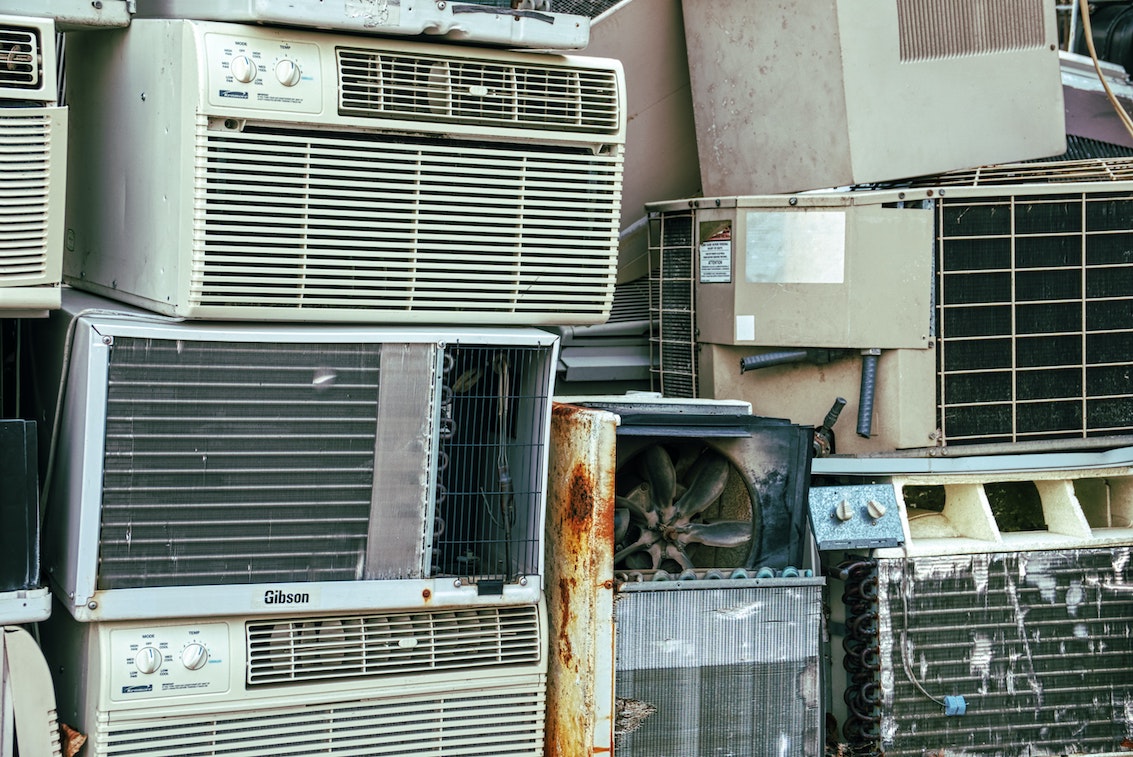
Every year, an estimated 100 billion tonnes of materials enter the global economy, but only 8.6% is recycled and used again.
EPR schemes, in which the producer’s responsibility for reducing environmental impact is extended across the whole life cycle of the product, can introduce opportunities for circularity within linear economic models.
At the end of its usable lifetime, electronic equipment (which covers a wide range of products that can include washing machines and personal computers) poses an environmental and financial opportunity, if disposed of correctly. As e-waste, these discarded appliances can be managed so as to reduce the resource impact they have through supervised recycling, repair, refurbishment, and remanufacturing, but only if these processes are carefully designed and implemented.
This report analyzes extended producer responsibility (EPR) schemes, which assigns the producer/manufacturer responsibility for end-of-life management. Because they will ultimately pay for its disposal, EPR schemes aim to incentivize thoughtful design that makes the products less resource-intensive, longer lasting, and easier to repair, repurpose, and eventually recycle. EPR schemes are an effective introductory tool for transitioning a traditional linear economy to a circular one which minimizes waste and negative environmental impacts.
CLASP looked at ten case studies of EPR schemes from around the world and outlined the different options available for an EPR program, some of which cover:
- Capacity building and needs assessment specific to the locality
- Managing body (government or private sector)
- Scope of products covered
- Prioritization based on the environmental and health impact of an appliance’s components
- Financial infrastructure
- Legal framework for ensuring compliance
It is important to note that CLASP does not present an ideal EPR framework in this report, as each program will vary based on the individual needs of the areas the programs serve. Some basic principles, like conducting an end-of-life management needs assessment with stakeholder consultations, is recommended in every situation for success.
Supporting Circular Economy for Renewable Energy Projects
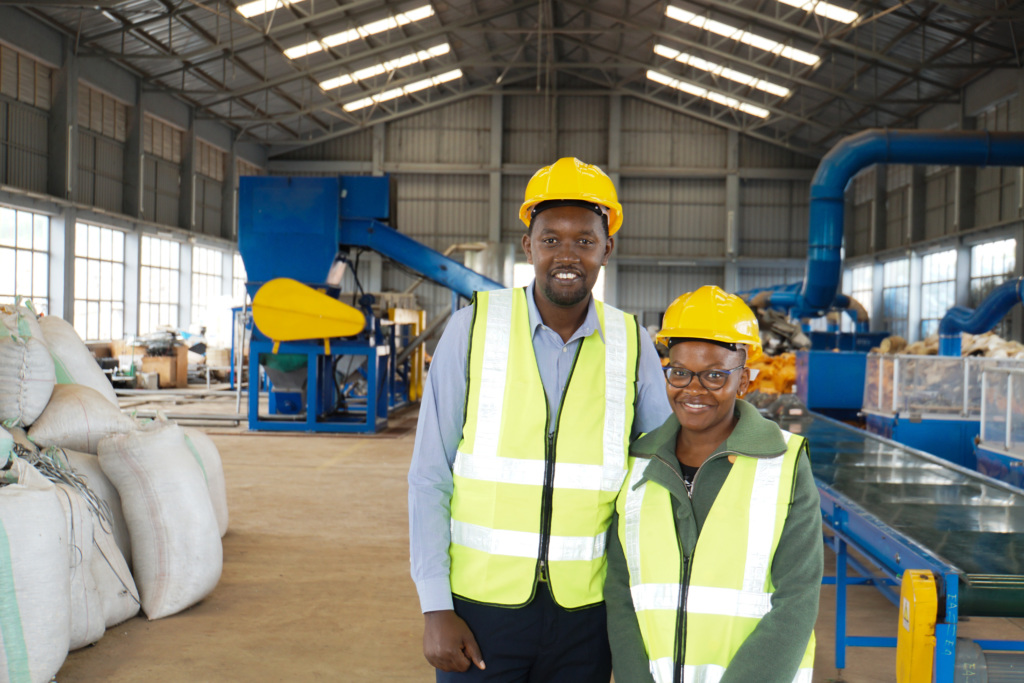
The demand for more renewable energy technologies such as solar panels and wind turbines is creating pressure on the environment due to mining of critical metals and production of more e-waste as these technologies reach their end-of-life cycle, creating an opportunity for a circular economy. In a circular economy, materials have multiple life cycles and re-entry points into the market as they are systematically recovered, repaired and remade.
CLASP is part of a team that supports the U.S. Agency for International Development’s (USAID) Scaling Up Renewable Energy (SURE) program. CLASP was recently awarded a subcontract under the SURE program, led by Tetra Tech, alongside dss+ to engage strategically with governments, the private sector, civil society, and communities to support transformational policies and initiatives and to build human capital and institutional capacity to address waste challenges associated with renewable energy investments while creating economic value and jobs. Tetra Tech, CLASP, and dss+ technical experts work with partners to develop innovative tools, sustainable practices, policies, business models, and secondary markets for renewable energy parts and materials, cultivating a circular economy that is gender-inclusive, reduces waste, makes the supply chain more resilient, and extends the life of parts. CLASP supports USAID in the development of country-specific circular economy plans to ensure the demand for renewable energy sources does not negatively impact the environment.
Renewable Energy: Sustainable Solution or Environmental Risk?
Obsolete renewable energy equipment is expected to grow exponentially over the next 30 years. Instead of damaged and decommissioned equipment piling up as waste, the life of these materials must be extended beyond their original use. In 2019, an estimated 18,000 tons of solar photovoltaic (PV) panel waste was generated. By 2050, PV panel waste could increase to 10 million tons annually (BNEF 2020). There will be up to 52,000 tons per year of decommissioned wind blades by 2030 (WindEurope 2020).
Amplifying Circular Economy in Our Appliance Work
What is the Environmental Footprint of an Appliance?
Understanding circularity and circular economy (CE) principles is vital to grasp the total environmental impact of the appliances we use every day. As stewards of appliance energy efficiency, CLASP’s mission to ensure appliances are veritably beneficial to people and the planet includes all stages of the appliance lifecycle.
CE principles have the potential to substantially reduce emissions associated with the production and end-of-life, as well as when appliances are in-use. The international CE movement is still relatively new – one-third of the Nationally Determined Contributions submitted in 2021 included mentions of “circular economy” – CLASP is working to influence budding CE programs and nudge other governments in a similar direction.
Strengthening Appliance Circularity in the EU
In 2016, CLASP published a study on the GHG savings potential from applying circular economy principles to a range of products and appliances covered by the EU Ecodesign directive.
“Our research showed that by simply extending the service life of several categories of appliances, the planet would experience significant CO₂ reductions,” said lead author Marie Baton of CLASP Europe.
Applying circular economy principles to product regulation can extend and expand our CO₂ mitigation efforts, covering the whole product’s lifetime, from raw material extraction and production through to transport, use and end-of-life.
Prolonging the service life of widely owned and highly used consumer electronics (e.g., laptops, smartphones, televisions, etc.) could potentially prevent 57,991 kg of CO₂. While the EU recently implemented a ‘Right to Repair’ plan for smartphones, more progress is needed to cover a wider range of household appliances to reach ambitious climate targets. The researchers recommended further investigation on the economic consequences and opportunities to strengthen legislative infrastructure that would incentivize CE transition programs.
Earlier this year, the EU updated their Ecodesign framework to include more product categories and increase efficiency requirements for currently regulated energy-related products. CLASP participated in the consultations for these revisions, which go beyond energy efficiency and may cover product durability, reusability, upgradability and reparability; presence of substances that inhibit circularity; energy and resource efficiency; recycled content; carbon and environmental footprint.
Building Capacity for E-Waste Management in Africa
Off-grid solar technologies provide life-changing access to modern energy services. Yet, unmitigated e-waste generation and insufficient treatment capacity threatens to reverse gains made within the sector. In 2019, CLASP through the Efficiency for Access Coalition, launched the Global LEAP Awards Solar E-Waste Challenge to address e-waste logistical and infrastructure challenges in sub-Saharan Africa.
“The first round of the Challenge supported eight companies – three recyclers and five solar companies – implement projects in take-back and collection, recycling, repairability and consumer awareness raising,” explained Monica Wambui who managed the project. “The second round is currently supporting four solar companies to design products and batteries that can be easily recycled and repaired.”
Some highlights from the Challenges include designing more easily replaceable batteries for solar home systems (Aceleron Energy); establishing a network of e-waste collection points across Rwanda, including rural areas and border points (Enviroserve Rwanda); and several take-back/buy-back programs to encourage circular reintegration (WeTu, SunnyMoney, d.light, and ENGIE Energy Access).
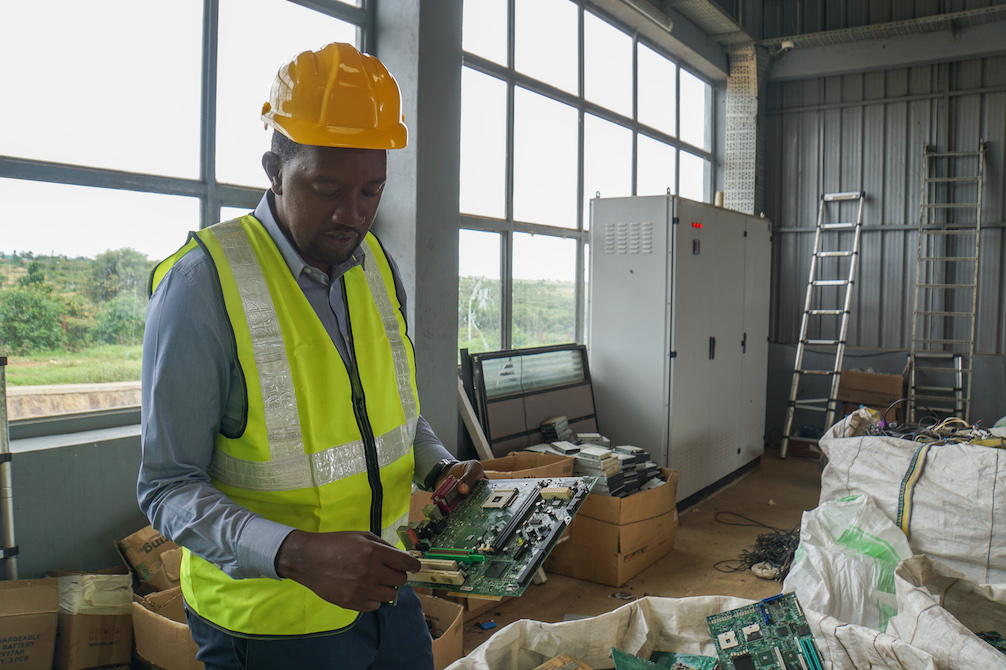
Hinckley Recycling, winner of the first round of the Challenge, recently partnered with CLASP through the Clean Lighting Coalition to procure the first mercury bulb crusher in Africa. The Nigerian facility is now able to safely dispose of fluorescents, preventing environmental contamination and negative health impacts from mercury exposure.
Charting a Course to Circularity in Thailand
“In Thailand, we cited global best practices in international CE labelling programs, like the German Blue Angel in Germany, and the Repairability Score in France, to provide a foundation for their own program,” explains CLASP’s Sara Demartini. CLASP organized an international CE labeling knowledge exchange in June with representatives from the Thai government as well as international stakeholders and the Thai industry.
“Our research coupled with the knowledge exchange led to recommendations for the Electricity Generating Authority of Thailand to be considered as they integrate CE into their program.” Though the recommendations were aimed at the Thai government, the conclusions remain relevant for any circular economy labeling scheme.
CLASP is also scoping opportunities to support Thailand introduce an end-of-life action plan for air conditioners by conducting international research and working with partners on the ground to understand current situation and challenges. The final output will be an end-of-life action plan for ACs, expected to be finalized in October.
Scaling Circularity for Renewable Energy
CLASP is also working as a subcontractor with Tetra Tech on USAID’s Scaling Up Renewable Energy (SURE) program to develop, promote and pilot CE initiatives around the world, focused on recycling renewable energy mechanisms.
“We will support the plan, design and execution of activities that will help USAID and its partner countries to better understand, implement, and promote a circular economy for renewable energy,” explains Monica Wambui who is overseeing CLASP’s contributions to the project.
CLASP looks forward to broadening the knowledge base for practical application of CE principles and will continue to advocate for appliances that will deliver the greatest benefits for people & planet.
